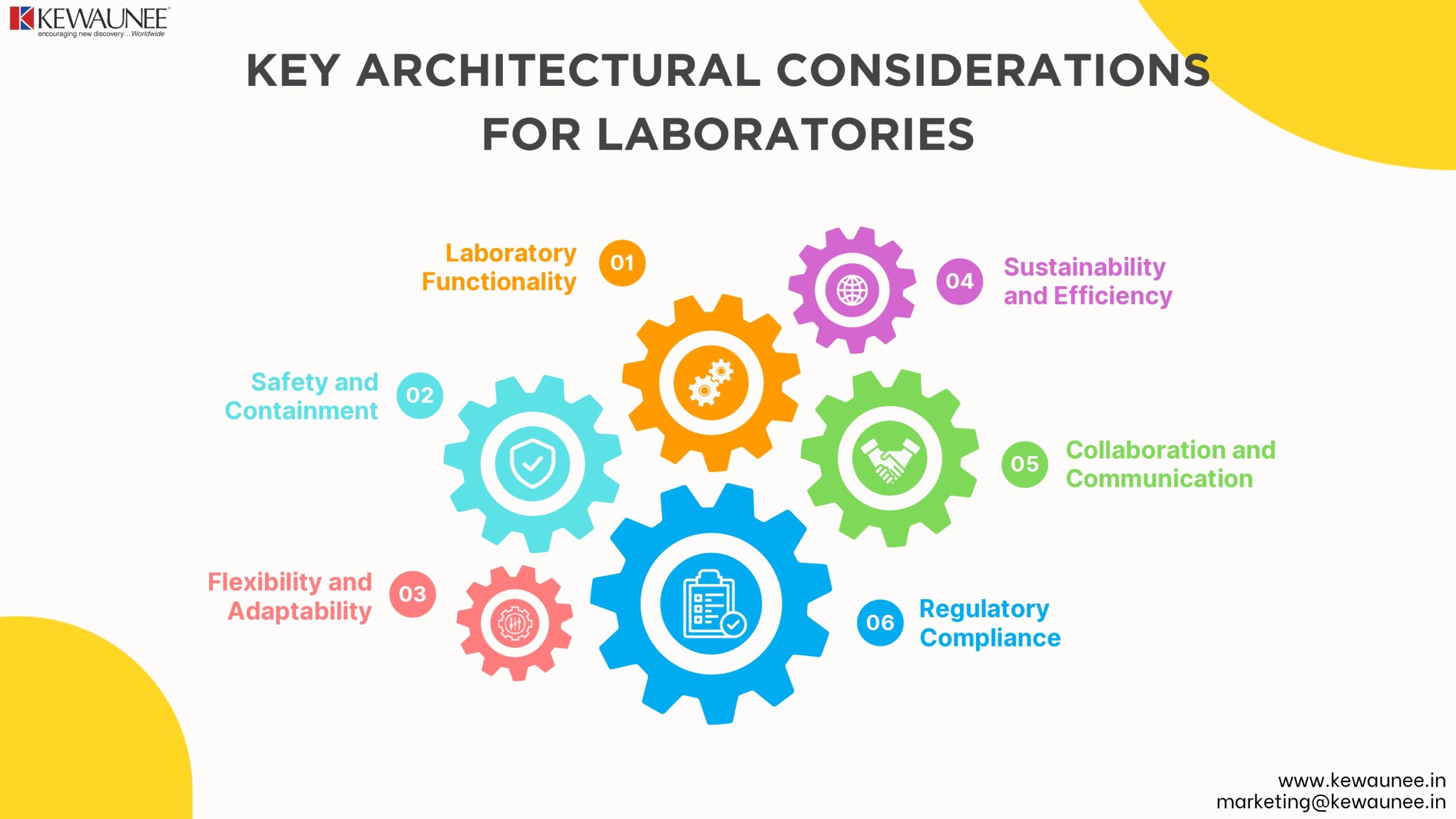Key Architectural Considerations for Laboratories
Laboratories are the crucibles of innovation, where scientific breakthroughs are forged. Behind every successful laboratory is meticulous architectural planning that ensures functionality, safety, and efficiency.
In this comprehensive blog, we will explore the key architectural considerations that underpin the design of laboratories, shedding light on the critical factors that contribute to their success.
1: Laboratory Functionality
1.1. Purpose-Driven Design:
Every laboratory has a specific purpose, whether it’s for biological research, chemistry experiments, or electronics testing. Architectural planning must align with the laboratory’s intended use.
1.2. Workflow Optimization:
Efficient workflow is essential. Laboratories should be designed to minimize bottlenecks and unnecessary movements, allowing researchers to focus on their work.
2: Safety and Containment
2.1. Hazard Identification:
Safety is paramount in laboratories. Architects must work closely with safety experts to identify potential hazards and design appropriate containment measures.
2.2. Ventilation and Exhaust Systems:
Proper airflow, fume extraction, and ventilation are crucial for maintaining a safe environment. Architects must ensure that the design includes efficient ventilation systems and emergency response features.
3: Flexibility and Adaptability
3.1. Evolving Needs:
Scientific research is dynamic, with changing requirements over time. Architects should plan for flexibility, allowing for easy reconfiguration and adaptation of laboratory spaces.
3.2. Modular Design:
Modular lab design allows for the addition or removal of components without major disruptions. It promotes adaptability and reduces renovation costs.
4: Sustainability and Efficiency
4.1. Energy Efficiency:
Sustainable laboratories reduce energy consumption through efficient lighting, heating, cooling, and equipment. Architects can incorporate eco-friendly features like energy-efficient windows and renewable energy sources.
4.2. Waste Management:
Proper waste disposal is essential. Architectural planning should include designated areas for waste storage and disposal in compliance with environmental regulations.
5: Collaboration and Communication
5.1. Collaborative Spaces:
Collaboration fosters innovation. Architects can create spaces that encourage interaction among researchers, promoting interdisciplinary work.
5.2. Communication Infrastructure:
Modern laboratories rely on advanced communication systems for data sharing and collaboration. Architectural planning should include provisions for the installation of high-speed internet and data networks.
6: Regulatory Compliance
6.1. Building Codes and Regulations:
Laboratory design must adhere to local, national, and international building codes and regulations. Architects should be well-versed in these requirements to ensure compliance.
6.2. Safety Standards:
Meeting safety standards is non-negotiable. Architects should work closely with safety experts to ensure that the laboratory design aligns with industry safety guidelines.
Summary
In summary, the architectural considerations for laboratories go beyond aesthetics. Functional, safe, and efficient laboratory design is essential for the success of scientific research. It involves meticulous planning to align with the laboratory’s purpose, optimize workflow, and ensure safety and containment.
Flexibility and adaptability are key for accommodating evolving research needs, while sustainability promotes energy efficiency and responsible waste management. Collaboration spaces and communication infrastructure foster innovation, and adherence to building codes and safety standards is essential. Architects play a pivotal role in shaping the laboratories of the future, where groundbreaking discoveries await in well-designed spaces that nurture scientific exploration.
Comments are closed.











